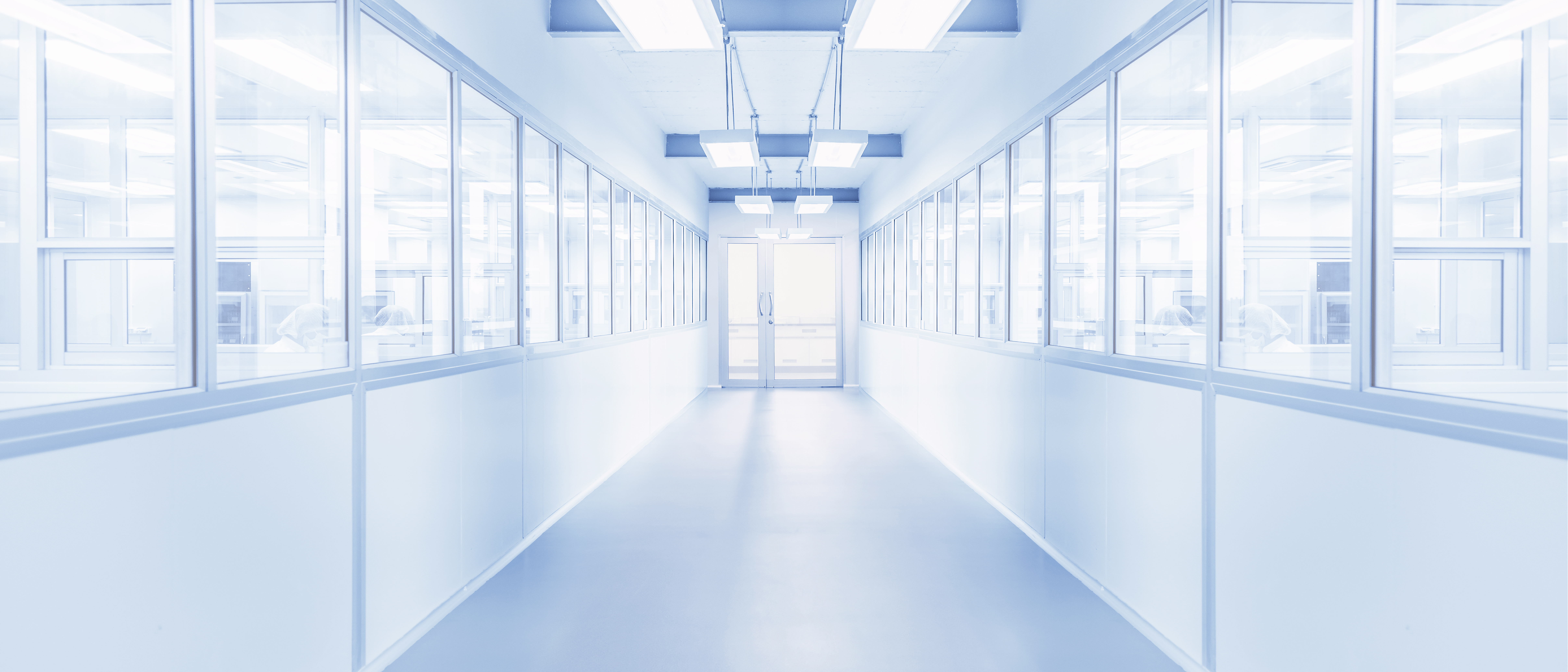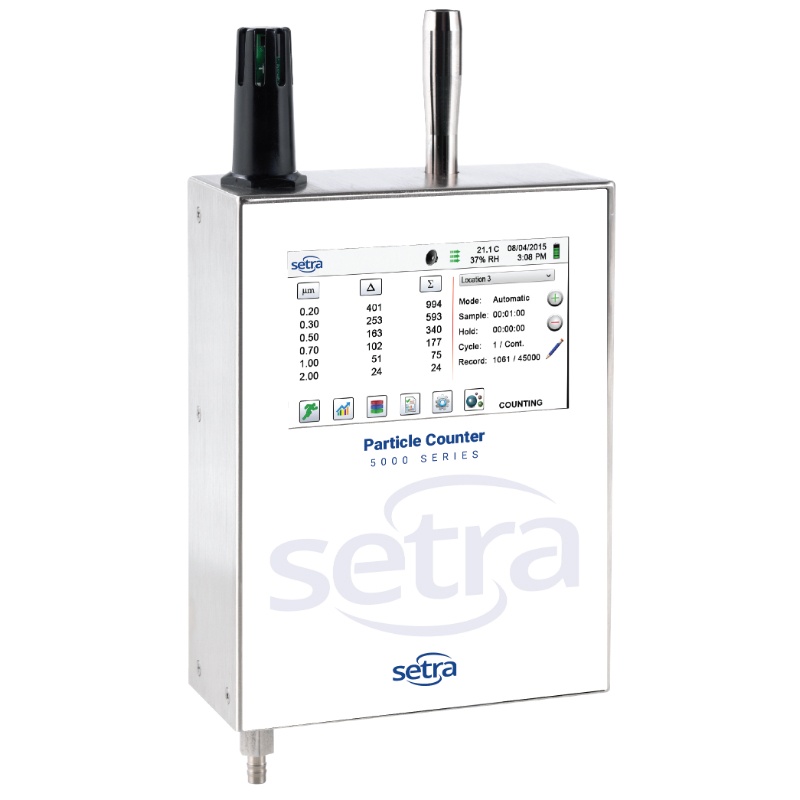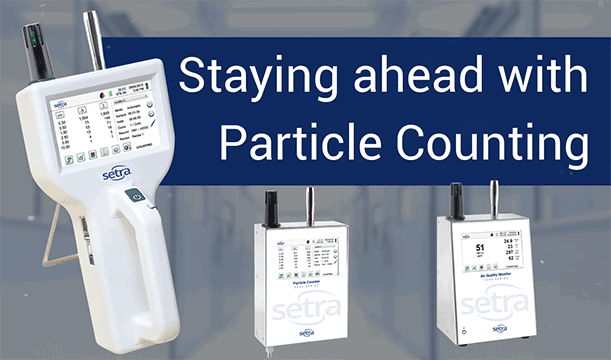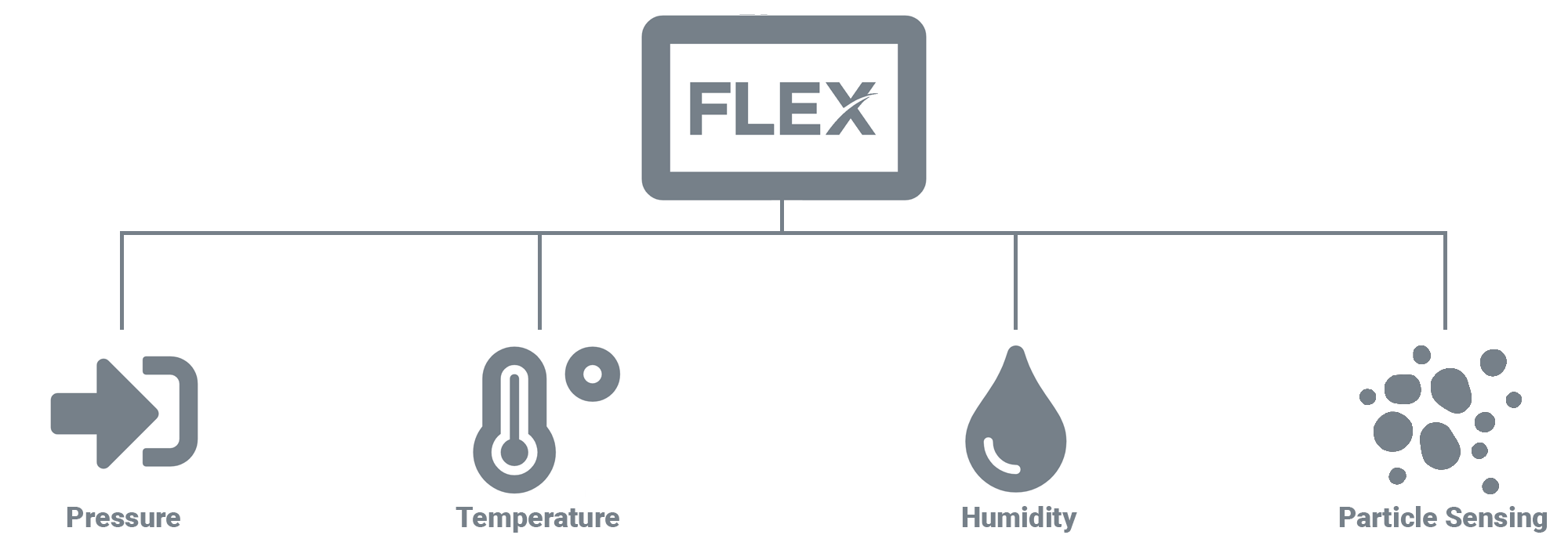Setra Blog
Setra’s comprehensive range ofparticle countersand air quality monitors are the most advanced, high-performance instruments available. This industry-leading position has developed from an enduring, intense focus on innovation and original intellectual property creation.
Environmental monitoring, especially particle counting, in cleanrooms is used to show that said cleanroom operates within its set parameters before and during manufacturing processes. The safety and quality of products can be affected if too many particles enter the manufacturing space or process. However, this monitoring is commonly still a manual process in many cleanrooms instead of routine or continuous particle counting. Cleanrooms are highly regulated environments that require the utmost attention to air quality and cleanliness.
To continue operating, a critical environment must meet many safety standards to keep their space free of harmful particles. If an environment is not monitored, it can be easily contaminated by harmful particles such as mold. Air sampling is one of the most common ways to monitor for - and thus prevent - mold. Viable and non-viable air sampling can be employed in detecting mold and other harmful particles in the air. Not monitoring for those particles can lead to disaster.
USP 797 revisions were published on June 1, 2019. The clarity and readability of documentation is a concern for all facilities and significantly impacts those who compound both hazardous and non-hazardous drugs or those who administer CSPs. The revisions toUSP 797reflect new science and evidence based on updated guidance documents, best practices, and new learnings.
OEM and mechanical parts suppliers adopting ISO Standards is increasingly common throughout the US, driven by a spike in industry demand for components manufactured in ISO compliant factories. In addition to existing and increasing demand for ISO compliance in clean rooms,healthcare spaces, and laboratories, manufacturing facilities like automotive, electronics, loT, and industrial are now adapting to observe these standards. To be ISO compliant, all of these spaces need highly accurate, reliable, and NIST-traceable sensors for monitoring.
When selecting a particle counter, it is necessary to consider what building automation network it can communicate with. Examining the available options helps to ensure the particle counter will connect to your existing network.
Nosocomial infections (also known as Hospital-Acquired Infections, Healthcare-Associated Infections, or HAIs) can result in otherwise avoidable extended hospital stays, readmittance, follow-up treatments, and even death. HAIs can often spread via airborne transmission, which emphasizes the need for proper room pressurization to contain hazardous particles. Operating rooms (ORs) are an area where patients are especially at risk for contracting infections. 2.5µm particles are an important leading indicator of the potential presence of contaminants that could put the patient at risk. The best opportunity to manage the risk of infections is by limiting 2.5µm particles in a space.
Inhaling airborne particles can put both critical patients and healthcare staff at risk for detrimental health issues. Controlling these particles is necessary for protecting both staff and occupants of nearby rooms from exposure to infectious particles. To maintain safety in a hospital, it is crucial to monitor both differential pressure and particle counts in anterooms.
Requirements andregulations对关键环境的要求越来越严格,这使得为太空寻找合适的产品变得越来越困难。不仅要考虑产品的规格,而且也要考虑供应商。想要从各种各样的供应商那里购买商品,需要花费大量的时间和精力。In addition to wasted time and effort, buying from multiple vendors comes associated with a number of risks and drawbacks, including:
- Incompatible hardware
- Incompatible software
- Minimal or disjointed tech support
- Inability to integrate products
- Installation and operational issues
Subscribe to Our Blog!
Topics
- HVAC/R(180)
- Critical Environments(173)
- General Industrial(152)
- Building Automation(134)
- General Industrial OEM(93)
- Energy Management(83)
- Test and Measurement(65)
- HVAC/R OEM(58)
- Barometric(44)
- Alternative Fuels(42)
- Process/Mfg Tank Level(40)
- Medical(39)
- Water and Wastewater(39)
- OHV(38)
- Oil and Gas(35)
- Industrial Vacuum(29)
- Calibration(25)
- Semiconductor(25)
- Particle Counting(16)
- Cleanroom Monitoring(12)
- Trade Show(12)
- Scales(11)
- Room Pressure Monitoring(10)
- Power Monitoring(9)
- Power Meters(8)
- Software(8)
- Case Study(7)
- Healthcare(7)
- Environmental Monitoring(6)
- Humidity(6)
- pressure transducers(6)
- Compliance(3)
- Video(3)
- cleanroom environment(3)
- cleanroom monitoring systems(3)
- FAQ & Troubleshooting(2)
- Semiconductor Manufacturing(2)
- agencies that monitor pharmacies(2)
- hardware and software cleanroom monitoring systems(2)
- particle counter(2)
- Compound(1)
- Current Sensors and Transducers(1)
- Current Transformers(1)
- LITE room pressure monitor(1)
- Monitoring Compounding Pharmacies(1)
- Pressure(1)
- critical environment technologies(1)
- energy(1)
- hvac(1)
- ipv6 multicast(1)
- ipv6 multicast address(1)
- ipv6 multicast address range(1)
- laboratories(1)
- monitor compound pharmacy(1)
- multicast address ipv6(1)
- multicast ipv6(1)
- pressure sensor(1)
- pressure transducer companies(1)
- regulatory compliance(1)
- semi conductor(1)
- sensors and transducers(1)
- setra lite(1)
- setra lite features(1)
- setra pressure transducers(1)
- temperature monitor(1)
- temperature monitoring for pharmacies(1)
- transducers(1)
- water(1)
- what does hvac stand for(1)
- what is a transducer(1)
- what is hvac(1)











